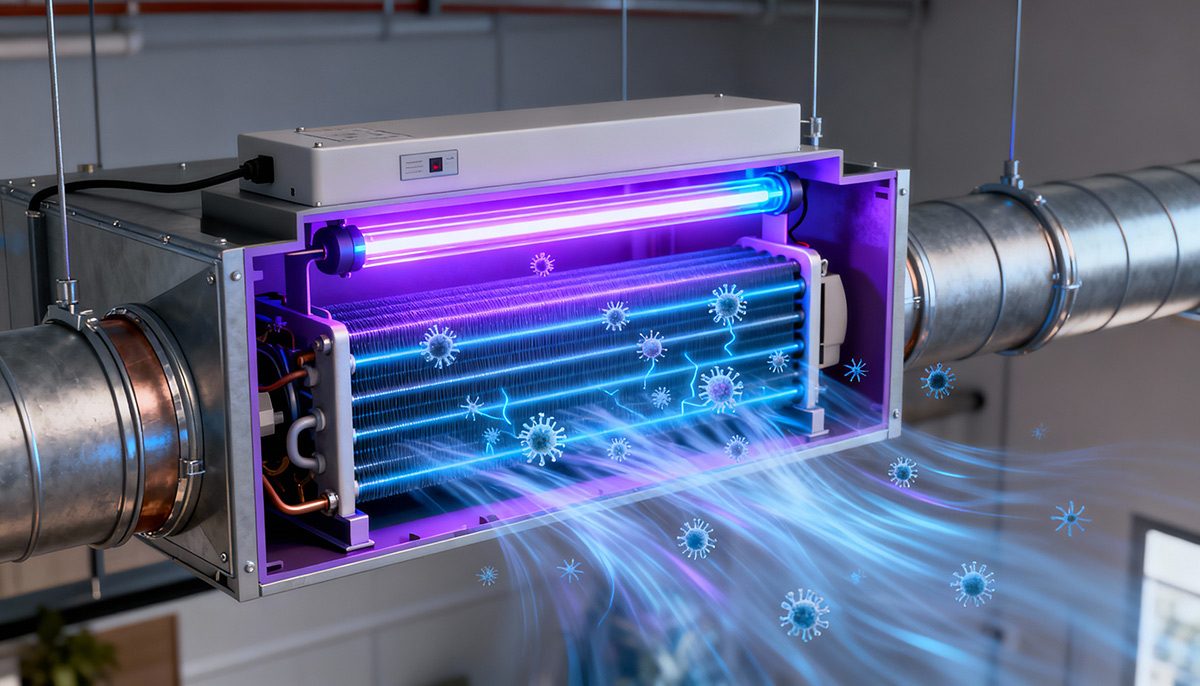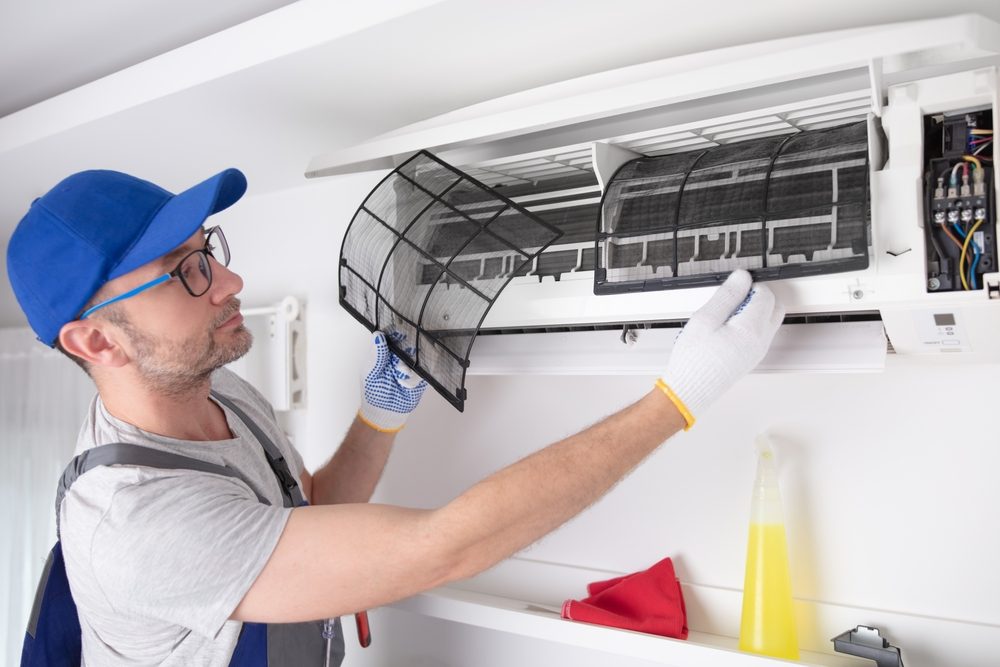
How to check air quality at home in the UAE
Good air quality in the home is crucial for maintaining health and well-being. Pollutants including dust, mould, pet dander, and volatile organic compounds from household products (also known as VOCs) can quickly accumulate, resulting in poor indoor air quality. This indoor pollution can lead to health issues, including respiratory problems and allergies, and can worsen existing issues – such as asthma – considerably.
It’s an alarming fact that indoor air can be several times more polluted than outdoor air. Compounding the problem, a recent study by Daikin showed that people in the Middle East often spend more than 90% of their time indoors during periods of extreme heat. All of which underlines that indoor air quality is a critical issue in our region.
In this article, we will outline the specific challenges UAE homes face in achieving good indoor air quality. We will look at:
- Key air pollutants to watch for in the UAE
- How to check air quality at home in the UAE
- How to improve air quality at home
Key air pollutants to watch for in the UAE
First, let’s look at what you need to be aware of in a typical UAE household. Some of these issues may be obvious, others less so.
- Sand and dust storms: The UAE’s desert environment makes it susceptible to frequent sand and dust storms. These can bring large quantities of particulate matter (i.e., dust and sand) into homes, impacting indoor air quality.
- Construction dust: Known for its skyline dotted with cranes, rapid urban development in the UAE produces dust from construction sites that can get into homes.
- Airborne pollutants from industrial emissions: Proximity to industrial areas can introduce pollutants like sulphur dioxide (SO₂) and nitrogen dioxide (NO₂) into residential areas, impacting indoor air.
- Humidity-related pollutants: High humidity levels in the UAE can lead to increased mould growth and dust mites, which can affect indoor air quality.
- Household chemical use: As you would expect in any household, cleaning products, insecticides, and air fresheners can release VOCs into the indoor environment, leading to potential health issues.
How to mitigate indoor air problems – a quick checklist
Maintaining good indoor air quality is essential for health and comfort. By understanding and mitigating these common and region-specific pollutants, residents in the UAE can create healthier living environments.
- Ensure proper ventilation: Use exhaust fans and open windows when possible to circulate fresh air.
- Regular cleaning: Frequent dusting, vacuuming, and cleaning to reduce the accumulation of dust, pet dander, and other particles.
- Air purifiers: Utilise air purifiers equipped with sufficient filters to remove particulate matter from the air.
- Control humidity: Use dehumidifiers to maintain optimal humidity levels and reduce mould growth.
- Minimize VOCs: Choose low-VOC products and increase ventilation when using household chemicals.
How to check air quality at home in the UAE
Here are three effective methods to check air quality at home:
- Use an air quality monitor: Air quality monitors can detect and display levels of pollutants in the air. They can measure particulate matter (tiny particles that penetrate deep into the lungs and are commonly found in dust and smoke), as well as VOCs, CO2 levels, plus humidity and temperature.
- DIY testing kits: These are a cost-effective and straightforward way to check for specific pollutants. While not as comprehensive as professional testing (which we will look at next), DIY kits can provide a quick assessment and help you decide whether further investigation is needed. DIY kits can check for mould, radon, formaldehyde and VOCs.
- Conduct professional air quality testing: If the DIY approach isn’t giving a complete picture, hiring a professional to conduct a comprehensive air quality assessment will provide a more detailed understanding of the pollutants present in a home. This is worthwhile if you think there are serious air quality issues in a household. Professional services may be able to detect a wide range of pollutants, including mould, allergens, VOCs, and more. They can then interpret the data and recommend what you should do going forward to ensure better indoor air quality.
How to improve air quality at home
Maintaining good air quality in your home is essential for health and well-being. We have mentioned some of these already, but let’s look at them in a little more detail.
- Enhance ventilation: Proper ventilation is crucial for reducing indoor air pollutants. To this end, it’s important to regularly open windows and doors to allow fresh air to circulate, particularly after cooking or cleaning. Exhaust fans can also remove moisture, odours, and pollutants from kitchens and bathrooms. Finally, consider installing mechanical ventilation systems like heat recovery ventilators (HRVs) or energy recovery ventilators (ERVs) to ensure a continuous exchange of indoor and outdoor air without losing energy efficiency.
- Regular cleaning and maintenance: Keeping your home clean and well-maintained can significantly improve air quality by reducing dust, allergens, and other pollutants. To do this, ensure you dust with a damp cloth so particles don’t float around in the air, and also ensure you vacuum frequently (using a vacuum cleaner with a HEPA filter, also known as a ‘high-efficiency particulate air’ filter, which can capture tiny particles). Regularly washing bedding, curtains, and upholstery will also help remove dust mites and pet dander. Finally, ensure your HVAC system is professionally maintained with clean air filters so you’re not unwittingly adding to the problem.
- Use air purifiers: Air purifiers can help remove airborne particles and pollutants, improving indoor air quality. Ensure the air purifier is the right size for the room, fitted with the correct filters, and situated in the optimal location.
Conclusion
Good air quality in the home is not only crucial for a person’s comfort but also affects long-term health. As we have seen in this article, there are several unique challenges facing the UAE residents when it comes to indoor air quality – as well as solutions for each of these issues. At Daikin, we are committed to making indoor environments safer and more comfortable. We offer a wide range of solutions tailored to meet diverse building requirements – including residential, commercial, and industrial. With innovative, pioneering technology and exceptional service, Daikin has sold millions of systems in 140 countries. If you would like to find out more about Daikin’s products, contact us today.



